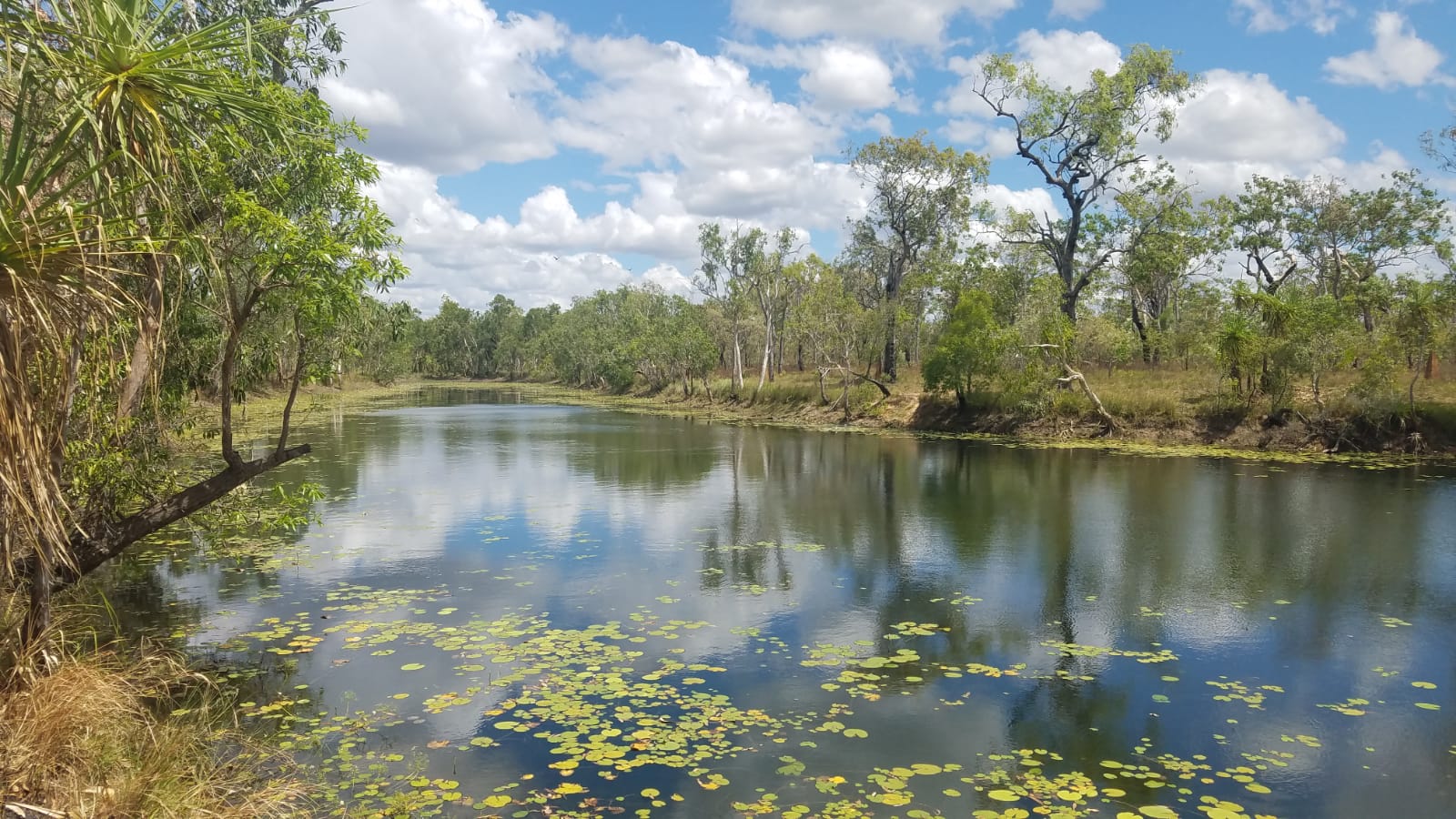Kune is a language spoken in Central Arnhem Land, in Australia’s Northern Territory. It is a variety of Bininj Kunwok, a chain of mutually intelligible dialects spoken across Western and Central Arnhem Land. The label Bininj Kunwok is an exonym meaning ‘Indigenous people’s language’. The latest census estimate puts the number of Kune speakers at approximately 180, among well over 2,000 speakers of Bininj Kunwok overall.
The Kune language is associated with a number of patrilineal clans and territorial estates near the upper Cadell River. This is a tropical savannah region, carved with billabongs and rivers (in the wet season). Kune country lies close to the Arnhem Plateau and is scattered with hills and floodplains. Kune speakers also regularly travel to, or live in, several larger settlements around Arnhem Land including Maningrida and Bulman, and in Darwin.
 |
|---|
| Kukolhkuyeng, a billabong on Kune country (source: Carlos Kruger/Eleanor Yacopetti) |
Bininj Kunwok (and so Kune) belongs to the Gunwinyguan language family, a non-Pama-Nyungan group of Australian languages. Syntactically, it is head-marking and polysynthetic. Kune is spoken in an extremely linguistically diverse environment. Multilingualism is the norm and linguistic exogamy – marriage to a speaker of another language – is common. Speakers are generally proficient in other Indigenous languages prominent in the region (e.g. Burarra, Ndjébbana, Rembarrnga, Kriol). As a result, there is significant contact between Kune and languages of diverse phylogenetic histories. Kune speakers are often proficient in English as well.
Kune is one of the focus languages of the OzSpace sociotopographic study. The Kune sub-project aims to document the grammar of spatial reference in Kune while investigating variation in spatial language use among members of the Kune community. In collaboration with Kune community members, Eleanor Yacopetti (a PhD student at Monash University) and Dr Maïa Ponsonnet (CNRS Lyon; The University of Western Australia) are responsible for the project’s Kune data collection and analysis. Data and results from the Kune sub-project will also contribute to the Topographic Correspondence survey.